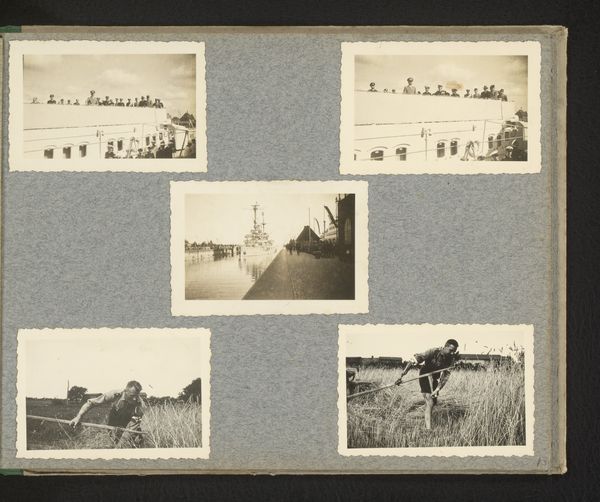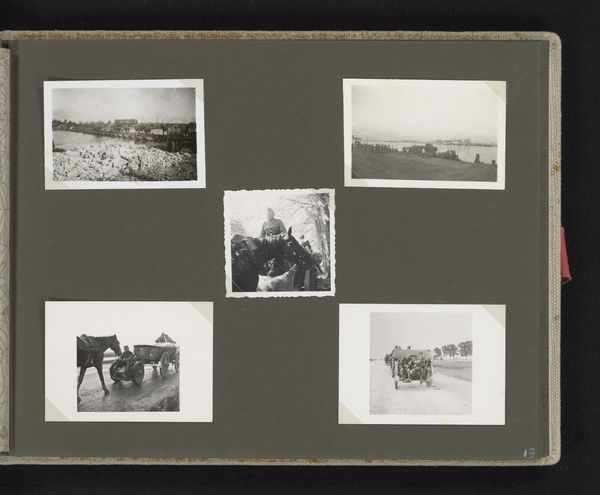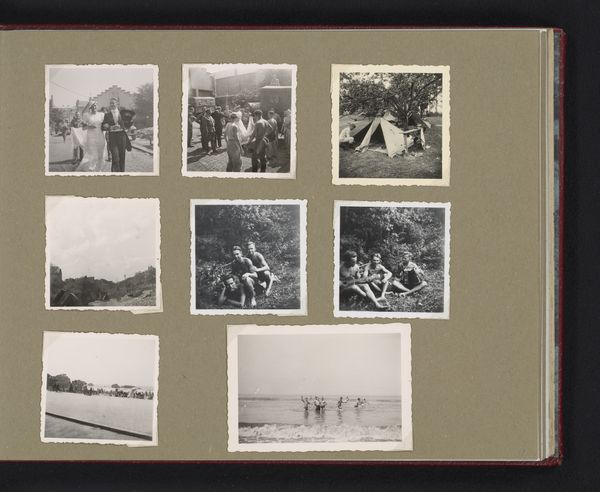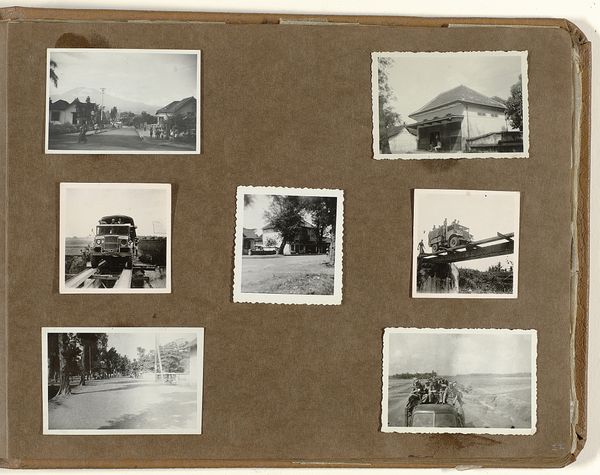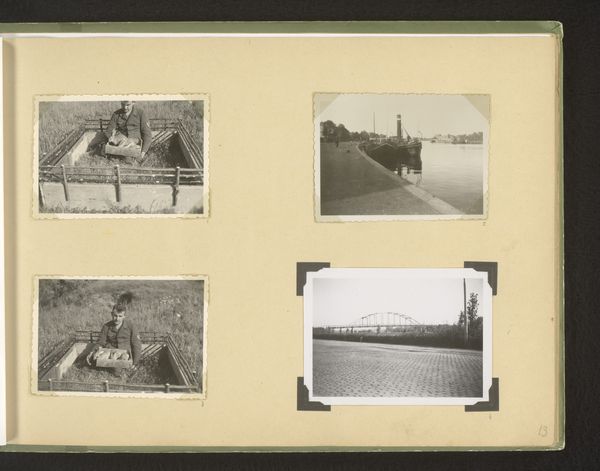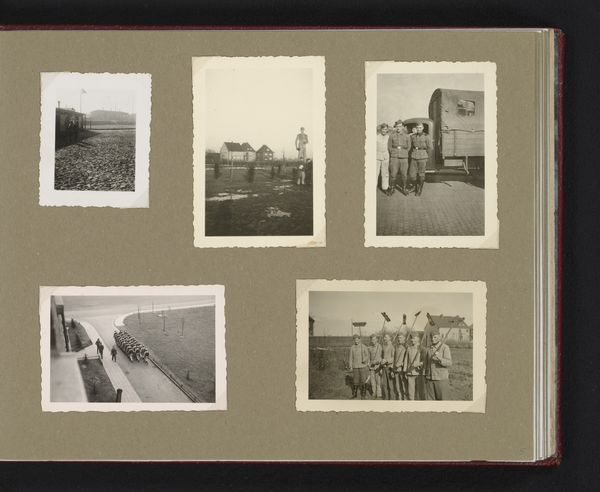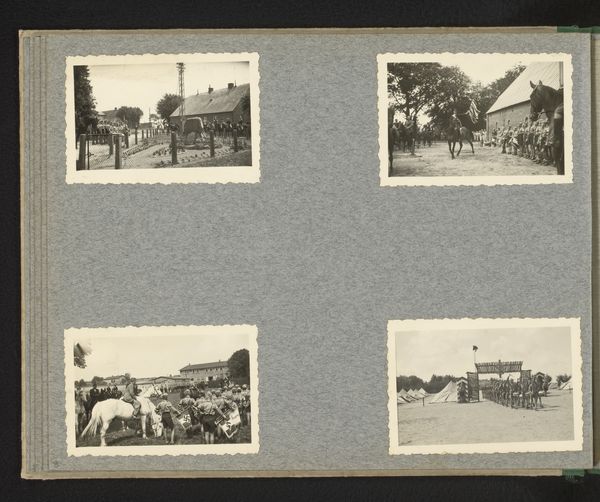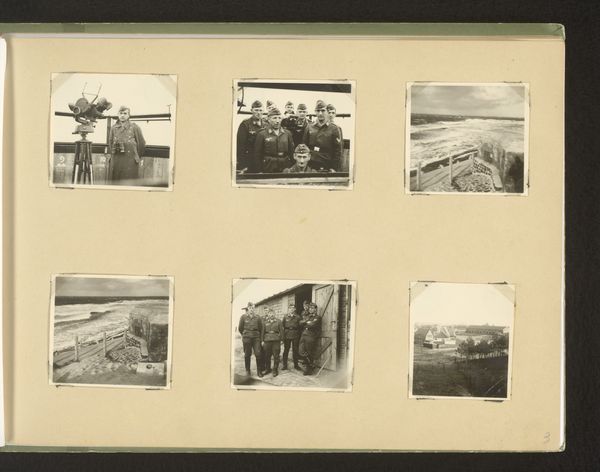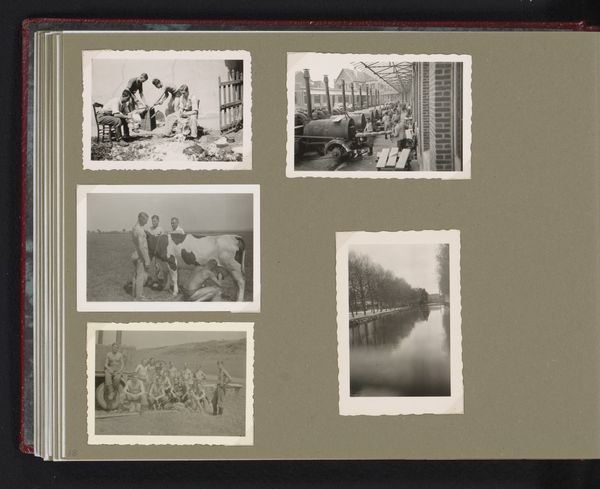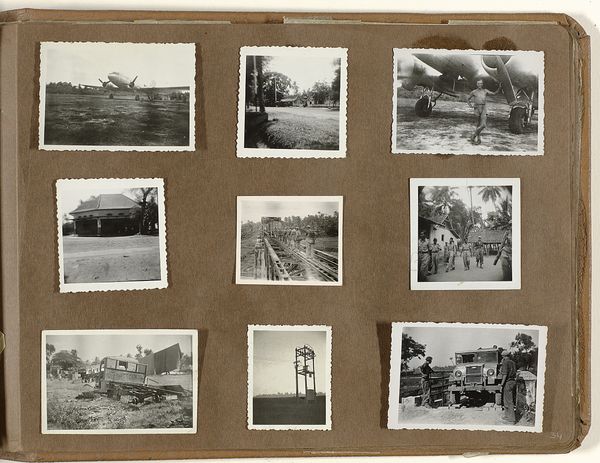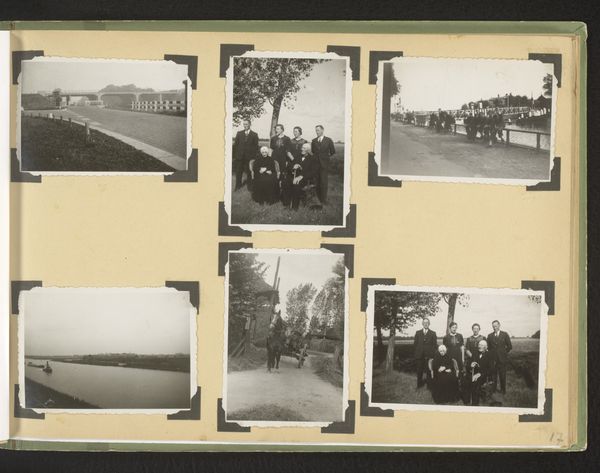
photography, gelatin-silver-print
#
portrait
#
muted colour palette
#
desaturated colours
#
landscape
#
social-realism
#
photography
#
group-portraits
#
gelatin-silver-print
Dimensions: height 60 mm, width 90 mm, height 207 mm, width 260 mm
Copyright: Rijks Museum: Open Domain
Curator: Today, we are looking at a gelatin-silver print simply titled, "Werken op het land," which translates to "Working the Land." It's dated circa 1935 to 1938 and created by an unknown photographer. Editor: My first thought? A patchwork of memory. It’s got that old album feel, a visual diary faded by time and experience. Sort of melancholy, isn't it? Curator: Socially and historically, it is deeply evocative. These scenes— manual labor, marching figures, trains—point towards a collectivized and controlled society. Think about the context in Europe during the late 1930s. Editor: Absolutely, a controlled society... and what strikes me is how each small square holds a quiet intimacy. The people bent over the harvest almost disappear into the fields; they're swallowed by the sheer physical demand. I mean, can’t you almost feel your own back aching just looking at it? Curator: It’s that connection between landscape and labor, often presented to show the dignity and pride in work but which can also mask darker social realities of the time. This social-realist aesthetic can be intentionally ambiguous. Editor: Ambiguous... That makes sense. My eye keeps darting from those hunched workers to that stark train image. Trains evoke such longing and journeys, but here, framed like this, they suggest something far less romantic: a kind of utilitarian starkness or even, dare I say, an unsettling removal. Curator: The strategic arrangement of the images definitely adds layers to the narrative. It makes you consider the connection between progress and displacement, rural life and industrial expansion. The very lack of specific attribution places this piece into a wider sphere of anonymous documentary. Editor: And what about the desaturated colors? It sucks all the cheeriness out, and it just gives it that documentary 'authenticity' thing going. It feels real because it *looks* faded. It’s odd, like a real moment manipulated somehow. Curator: It reflects how photographs often create narratives. The muted palette enhances that stark realism and almost a feeling of inevitability around these collective, potentially ominous activities. Editor: I love that, the idea of the photographer hinting without hammering a message home. This feels more genuine. It sparks that introspective dialogue… which is what truly great art does, isn't it? Curator: I completely agree. Looking at “Working the Land,” it reminds us to analyze the narratives embedded in seemingly straightforward imagery and to recognize photography’s power in shaping perceptions of both the past and present.
Comments
No comments
Be the first to comment and join the conversation on the ultimate creative platform.
